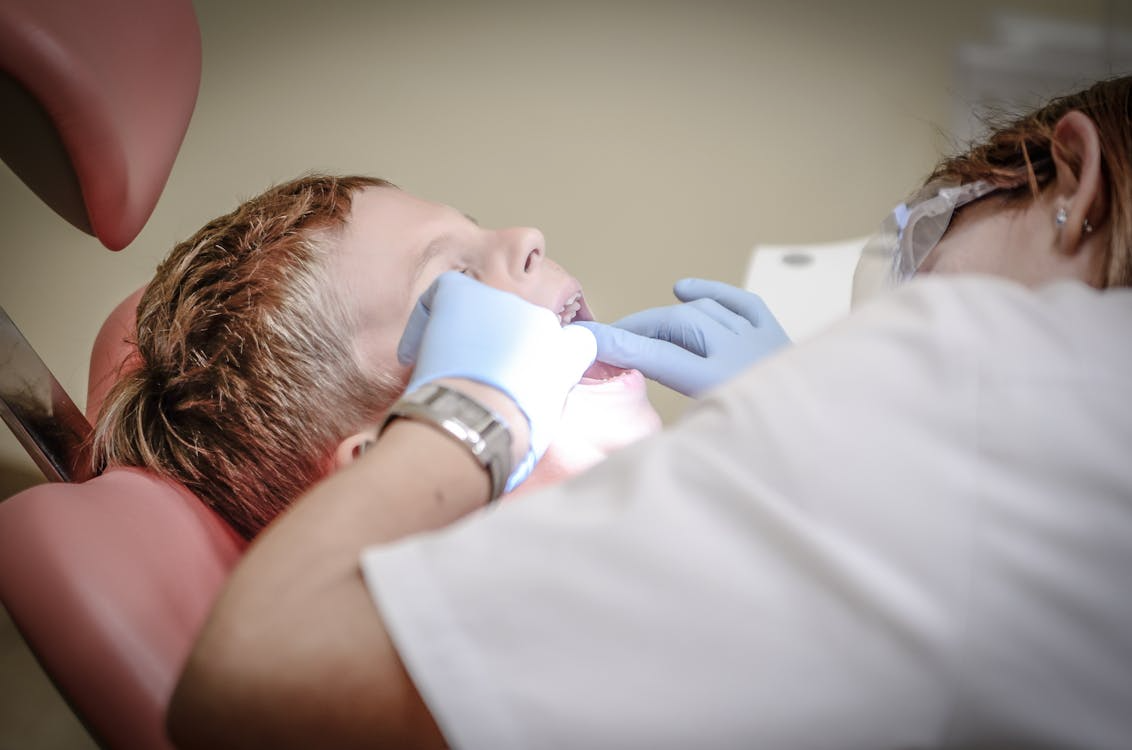
Millions of Australian families have a hidden dental benefit waiting for them—yet most don’t even know it exists.
It’s been around for more than a decade, quietly offering free dental care to children from low-income families.
Many grandparents could be giving their grandchildren a gift they never had themselves—without spending a cent.
The Child Dental Benefits Schedule (CDBS) provides up to $1,132 over two years for children and adolescents aged 0-17 from families receiving eligible government payments.
Despite its availability since 2014, uptake has remained stubbornly low, with only around 600,000 of 2.4 million eligible children accessing the scheme.
'It's a terrific opportunity for relatively low-income families to get access to high-quality dental care for their kids and build that strong oral health for a lifetime.'
Confusion around accessing the program is a major barrier, according to the Australian Dental Association, but research suggests deeper issues persist.
Social determinants such as transport, work schedules, and health literacy continue to impede families from claiming free dental care.
The CDBS isn’t just about check-ups.
Families can use the full $1,132 for a range of services including examinations, X-rays, cleanings, fissure sealing, fillings, root canal treatments, extractions, and emergency care.
Teeth whitening, braces, and cosmetic procedures are not covered.
CDBS coverage includes
Dental examinations and consultations—X-rays and diagnostic services—Professional cleaning—Fissure sealing (protective coating for teeth)
Fillings and restorative work—Root canal treatments—Tooth extractions—Emergency dental care
Not covered: Teeth whitening, orthodontics (braces), or purely cosmetic procedures
The program operates on a ‘use it or lose it’ basis, resetting every two years for families who maintain eligibility.
If a family used part of their benefit one year, the remainder could be used the following year, provided they continued receiving eligible government payments.
To qualify, children must be under 18 and their family must receive payments such as Family Tax Benefit Part A, Parenting Payment, or other eligible Centrelink payments.
Families regain a fresh two-year benefit period if they regain eligibility after a break.
Did you know?
Access barriers remain Research from 2025 found that even when financial barriers were removed through the CDBS, many families could not access services due to social factors like transport, work scheduling conflicts, and health literacy issues.
Awareness alone is not enough.
Families need help finding participating dentists, booking appointments, and managing logistical challenges such as time off work or transport.
Steps to claim CDBS benefits
Log into myGov to confirm your family's eligibility
Find a participating dentist (most private and public providers participate)
Call ahead to confirm the dentist accepts CDBS patients
Book an appointment—no upfront payment required for covered services
Bring your Medicare card and proof of eligible payment status
Any gap payments for services exceeding scheduled fees are your responsibility
Dental caries remain the most prevalent disease burden for Australian children aged 5-14, making CDBS an important tool for preventing lifelong oral health problems.
For grandparents, guiding eligible family members to access the benefit could be one of the most valuable gifts they provide.
The two-year cycle of the program allows families to plan strategically, beginning with a comprehensive examination and clean to catch issues early and keep treatment costs lower.
Even families who have used the benefit before should check for a new two-year eligibility period, as the program resets for families who regain eligibility.
For a program running more than a decade, continued low uptake demonstrates that availability alone is insufficient.
Families require guidance to navigate the system, particularly those facing social and economic challenges that make them eligible in the first place.
What This Means For You
The Child Dental Benefits Schedule (CDBS) provides up to $1,132 over two years for eligible children and adolescents, yet only around 40 per cent of families are currently accessing this valuable program.
The scheme covers essential dental services, including examinations, cleaning, fillings, root canals, extractions, and emergency care, though cosmetic procedures are not included.
Despite the benefits being available, social and logistical barriers—not just lack of awareness—continue to prevent many families from taking full advantage of the support.
For grandparents and older Australians, this represents an opportunity to make a real difference in their grandchildren’s oral health.
By guiding families through the process and helping them navigate the system, you could unlock significant dental care for your loved ones, ensuring they start life with a healthy, confident smile.
Change in Dental Visits Among Eligible Children Under the Impact of the Child Dental Benefits Schedule in Australia — Discusses the introduction of the means-tested Child Dental Benefits Schedule in 2014 and its aim to support access to dental services for children from low-income families.
https://pmc.ncbi.nlm.nih.gov/articles/PMC12238733/
Change in Dental Visits Among Eligible Children Under the Impact of the Child Dental Benefits Schedule in Australia — Highlights that child oral health continues to be a major public health issue in Australia despite some improvements.
https://pmc.ncbi.nlm.nih.gov/articles/PMC12238733/
Change in Dental Visits Among Eligible Children Under the Impact of the Child Dental Benefits Schedule in Australia — Explains that while financial barriers were removed, other social determinants of health continue to limit uptake of dental services.
https://pmc.ncbi.nlm.nih.gov/articles/PMC12238733/
What’s covered by the Child Dental Benefits Schedule — Child Dental Benefits Schedule — Services Australia — Details that families can use up to $1,132 in dental benefits over a two-year period, contingent on maintaining eligibility through government payments.
https://www.servicesaustralia.gov.au/whats-covered-child-dental-benefits-schedule?context=22426
What’s covered by the Child Dental Benefits Schedule — Child Dental Benefits Schedule — Services Australia — Provides an example of benefit usage showing how remaining balances can carry over to the following year if eligibility is maintained.
https://www.servicesaustralia.gov.au/whats-covered-child-dental-benefits-schedule?context=22426
What’s covered by the Child Dental Benefits Schedule — Child Dental Benefits Schedule — Services Australia — Explains that when families regain eligibility after a break, they receive a fresh two-year benefit period starting 1 January of that year.
https://www.servicesaustralia.gov.au/whats-covered-child-dental-benefits-schedule?context=22426
Change in Dental Visits Among Eligible Children Under the Impact of the Child Dental Benefits Schedule in Australia — Emphasises that improving access and uptake requires addressing inequalities in social determinants of health and limited cross-sectoral action.
https://pmc.ncbi.nlm.nih.gov/articles/PMC12238733/
Change in Dental Visits Among Eligible Children Under the Impact of the Child Dental Benefits Schedule in Australia — Notes that non-financial considerations must be addressed for greater coverage, indicating awareness campaigns alone are insufficient.
https://pmc.ncbi.nlm.nih.gov/articles/PMC12238733/
Change in Dental Visits Among Eligible Children Under the Impact of the Child Dental Benefits Schedule in Australia — Highlights that dental caries are the most prevalent disease burden for children aged 5–14, making CDBS a crucial program for access to dental care.
https://pmc.ncbi.nlm.nih.gov/articles/PMC12238733/
Change in Dental Visits Among Eligible Children Under the Impact of the Child Dental Benefits Schedule in Australia — Discusses that health policies often focus on average health improvements rather than reducing inequities, reinforcing the importance of programs like CDBS.
https://pmc.ncbi.nlm.nih.gov/articles/PMC12238733/
Accessing free dental care through government programs can sometimes feel complicated, even when the benefits are available and well-intentioned.
Challenges like long wait times and limited coverage highlight why ongoing policy discussions around public dental services are so important.
For a closer look at how the government is responding to these issues, consider this related story.
Read more: Federal government will face pressure to add dental to Medicare, amid 'overwhelming' wait times
Have you or your family accessed the Child Dental Benefits Schedule, and how did it help your children?







